Groznjan Jazz Programme Gathers Generations from Multiple Countries
August the 1st, 2022 - The Groznjan jazz programme has succeeded in gathering together generations of jazz music lovers from a multitude of different countries from all across the world.
As Morski writes, exceptional cooperation between participants of various educational programmes and their mentors, along with top-notch knowledge and great talent have been woven into the foundations of the International Cultural Centre of Croatian Musical Youth under whose auspices jazz programmes are being held in Groznjan, which is fondly referred to the smallest jazz metropolis in the world.
The Groznjan jazz programme, Festival Jazz is Back! BP, the Summer Jazz School and the Croatia Drum Camp, has successfully brought together all generations from as many as twenty countries spanning four continents, as well as a large audience, that enthusiastically followed the musicians this summer.
Along with the main organiser, Croatian Musical Youth (HGM), the co-organisers of Festival Jazz is Back! BP, is the Istrian Municipality of Groznjan itself, and the Polyvalent Cultural Centre in Groznjan.
''With its favourable geographical, climatic and traffic conditions, this small, old Istrian town on the one hand optimally meets the needs of artists and the Musical Youth for a place to gather together and work, and on the other hand, the artists and the Musical Youth offered a superior programme back to Groznjan,'' pointed out Dubravka Dujmovic Kusan, the secretary of the HGM.
The participants of the Groznjan jazz programme were from all over Croatia, Germany, the neighbouring countries of Hungary, Slovenia, Bosnia and Herzegovina and Montenegro, as wellas Israel, Bulgaria, Austria, Australia, USA, Italy, Finland, France, Sweden, the Czech Republic, Russia, Puerto Rico, Greece, Ukraine, Spain, Switzerland, and the Netherlands.
Workshops were held daily as part of the Groznjan jazz programme, and music was also played on the streets of this quaint Istrian town, sometimes in an organised manner, and sometimes quite spontaneously, which was enjoyed by both Croatian and foreign visitors to the town.
It is important to mention that the participants of the Groznjan jazz programme were accompanied by their mentors Luis Bonilla, Alex Sipiagin, Famoudou don Moye, Elvis Penava, Karlheinz Miklin Jr., Lea Lovrencic, Joe Kaplowitz, Goran Rukavina, John Riley, Dick Oatts and Marko Lazaric. Also performing were Jim Rotondi, Jon Boutellier, Gary Smulyan, Andrea Pozza, Aldo Zunino, Bernd Reiter, Primoz Grasic, Mario Mavrin, Vid Jamnik, Blaz Jurjevcic and Tijan Grasic, all of them being truly excellent musicians immortalised by their numerous awards, and among them were and multiple Grammy and Porina winners.
Zvjezdan Ruzic, Borna Sercar and Lado, Zdenka Kovacicek and the Green House Band, Amira Medunjanin and Ante Gelo, Branko Sterpin, Srdjan Kolarevic, Srdjan Kuzmanovic, Marco Quarantotto and Edi Maruzin with the Edi East Trance Blues Band also performed as part of the Groznjan jazz programme.
Young talent is continuing to arrive in Groznjan to attend the string seminar led by Andjelko Krpan, Milan Cunko, Branimir Pusticki and Ilin Dime Dimovski, and the programmes of the International Cultural Centre of the Croatian Musical Youth in Groznjan are going to be held until the middle of September.
For more, make sure to check out our dedicated lifestyle section.
8 Magical Towns in Central Istria that Are Absolutely Worth Visiting
May 30, 2022 - Istria is one of the most fascinating regions of Croatia, and while most are more familiar with its magical seaside towns like Pula, Rovinj, Umag, or Poreč, the many medieval towns in Central Istria are just as impressive and definitely worth being explored.
In recent years, Istria has shown its might as a tourist destination, defying the surreal circumstances caused by the coronavirus pandemic by being easily reached by land from other European countries. But Istria is not at all a consolation prize for its proximity, quite the opposite. The largest peninsula in the Adriatic is home to spectacular towns, world-renowned wines and olive oils, unique cuisine, numerous beaches, five-star hotels, and a wealth of culture and history.
But not everyone comes up with an idea of this region beyond the sea, the islands, and the beaches, something that happens similarly in Dalmatia. Some forget that much of Istria's magic lies (not so) far from the coast. With this in mind, here we show you some of the best destinations you can visit in Central Istria. Warning: Not to be confused with Central Istria as a public administration, since it only covers some districts. In this article, we will mention destinations on the Istrian peninsula that are not located by the sea.
Pazin
Located right in the heart of Istria, Pazin is known for medieval Pazin Castle, the former residence of the Istrian margraves. The intensity of life here is pretty much the same in winter and summer, with the monthly exception of every first Tuesday, when a flood of curious buyers from all over Istria runs into the town to visit the traditional Pazin Market. Pazin is very rich in culture and history due to the presence of different civilizations, empires, and governments throughout time. Be sure to visit the Pazin castle, the Pazin abyss, the Franciscan monastery, the Memorial Center of Union and Freedom, the state archives, and more. Learn more about Pazin here.
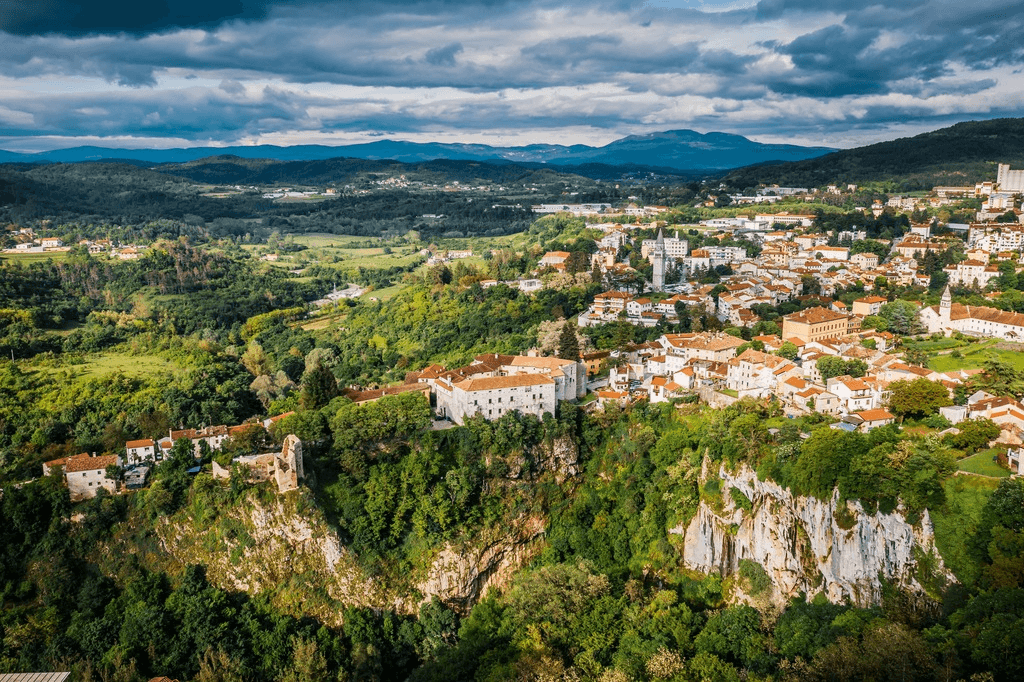
Image: Tourist Board of Central Istria/Official Website
Motovun
Motovun sits on top of a hill towering over the valley of Mirna, the biggest Istrian river. The location was settled since Celtic times, but the town we know today was mostly built under Venetian rule in the Middle Ages. Its centuries-old walls and buildings are the best preserved in Istria, giving the place a unique charm. Yet Motovun is more than its quaint architecture and breathtaking view. It is the Croatian capital of truffles and hosts a famous film festival, which will take place from July 26 to 30 this year. Learn more about Motovun here.
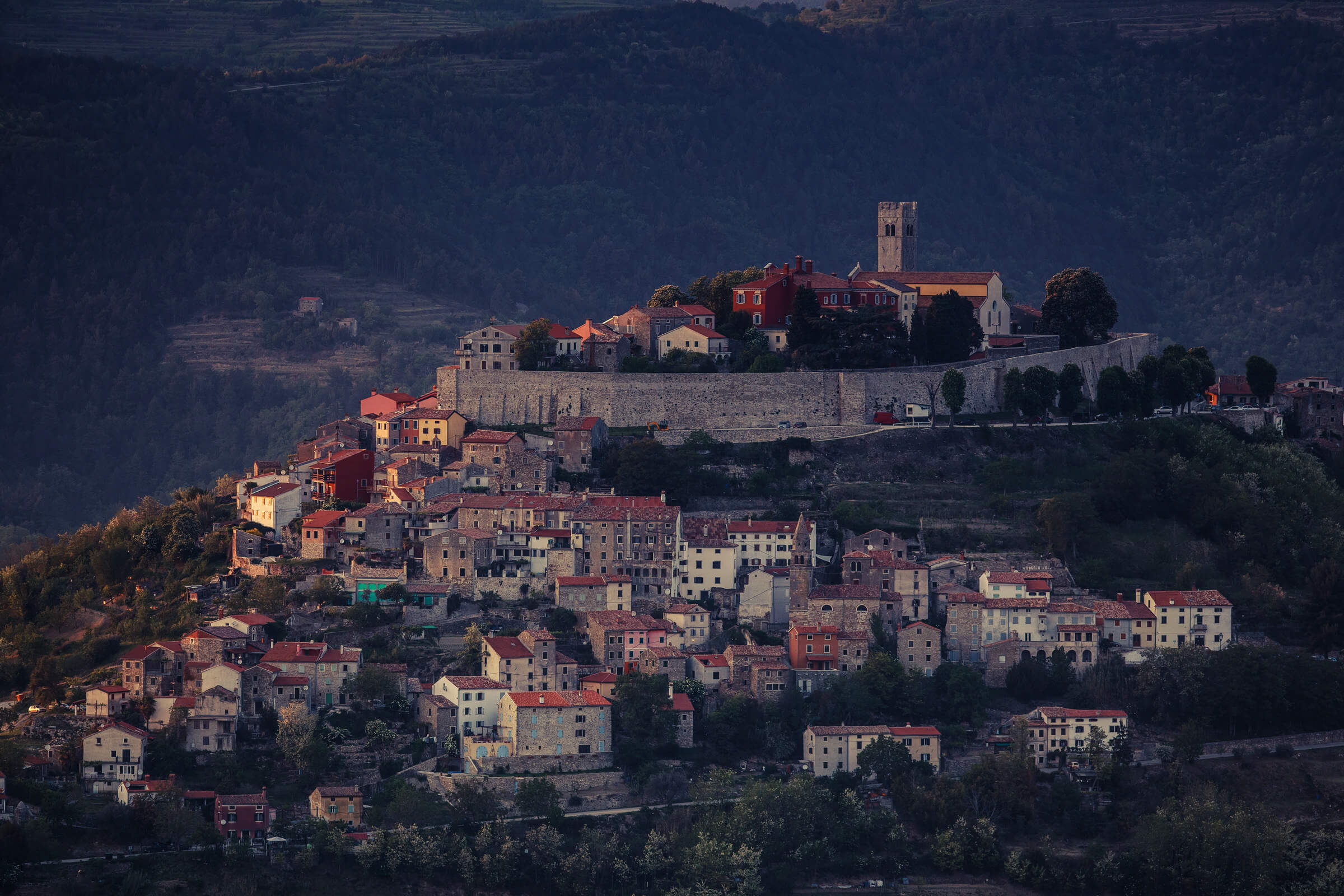
Photo: Mario Romulić
Hum
Often referred to as the smallest town in the world, Hum is a town situated on a hilltop above the source of the Mirna River. It is located in the vicinity of Buzet and Roč. The towns of Roč and Hum have been connected through a shared history and culture since ancient times, and are now also connected by the famous Glagolitic Alley. Hum has just 20 inhabitants, and therefore its well-known name as the smallest town in the world. Learn more from Hum here.
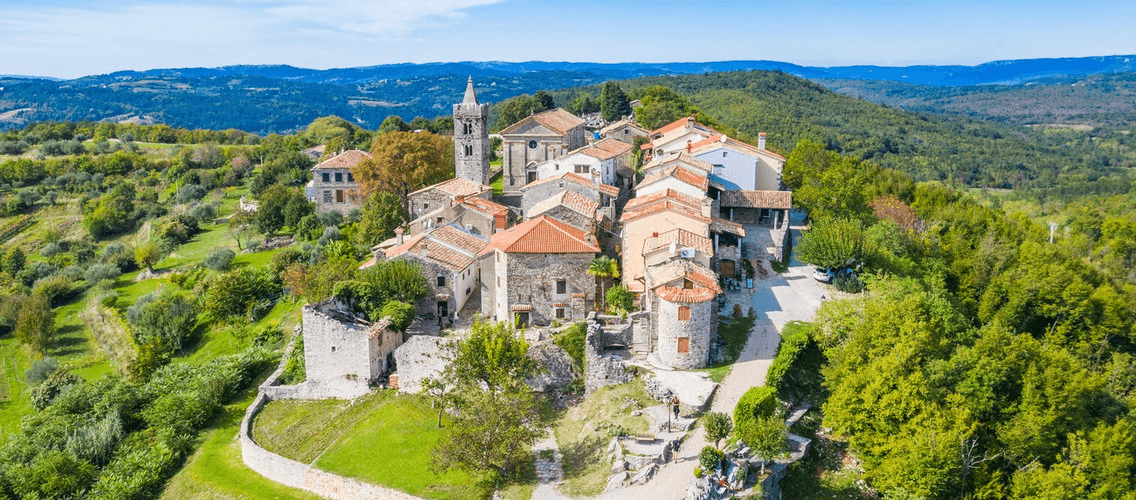
Image: www.valamar-experience.com
Labin
Labin is the biggest town in the otherwise not-so-populated and not-so-popular eastern Istria. In the past, the town was known for its coal mines. Nowadays, all the mines have been closed, and there are no more miners. The community is turning more and more towards tourism - but is far from being overwhelmed by it. Its old town, sitting on top of a hill, is among the most beautiful ones on the peninsula. Although it's not located by the sea, and exactly because of that, Labin has a stunning view of Kvarner bay. Learn more about Labin here.
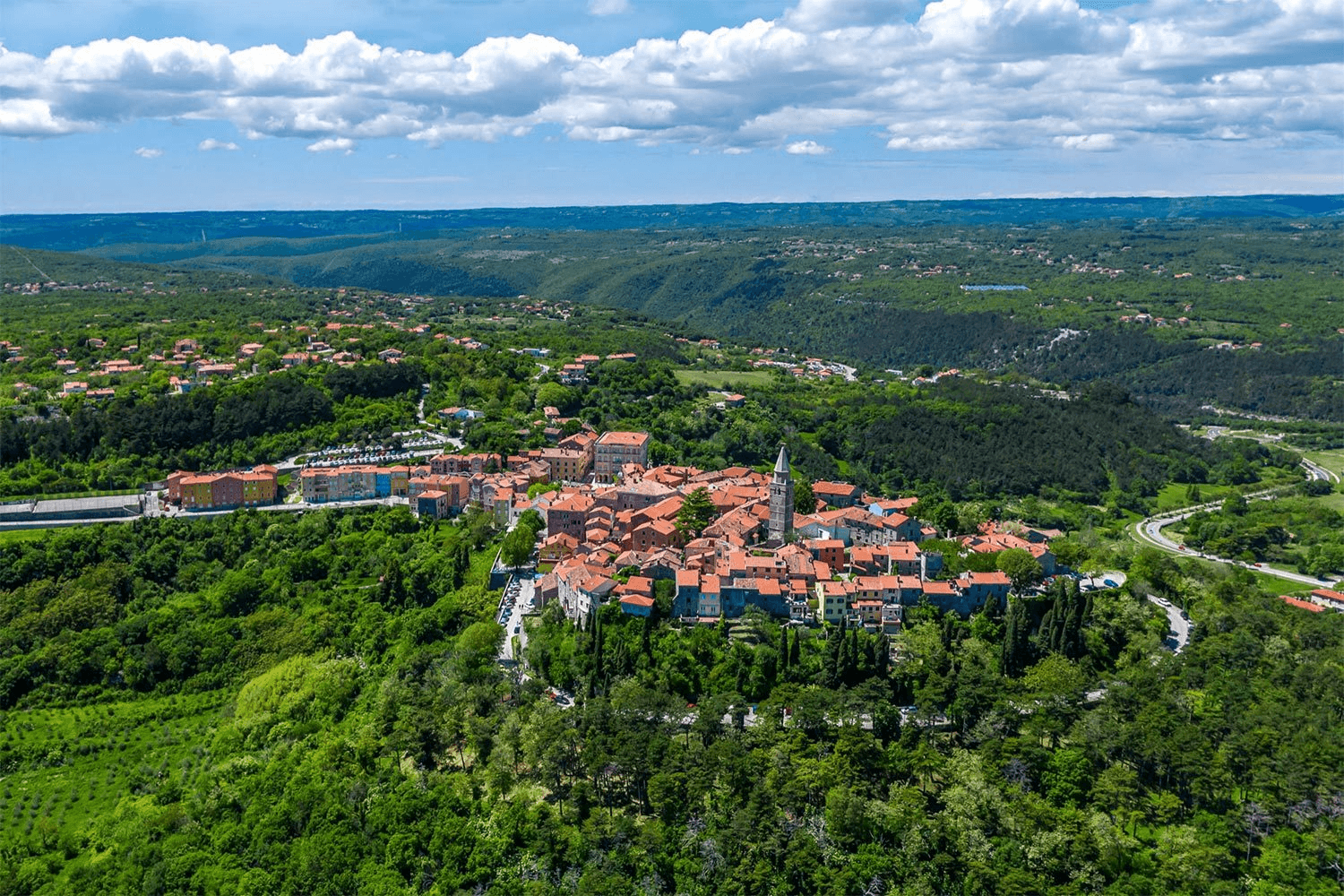
Image: Labin-Rabac Tourist Board/Official website
Vodnjan
Vodnjan is situated near Pula, where excellent olive oil is produced, and its surroundings have the largest number of kažun houses, dry-stone houses in the Mediterranean. The largest church in Istria –Parish Church of St Blase was built at the end of the 18th century, with the 63-meter-high bell tower. The church holds a valuable collection of sacral art and preserved bodies of saints, the so-called Vodnjan mummies, due to which it is visited by around 16000 people a year. Learn more from Vodnjan here.

Image: www.visit-croatia.hr
Buje
The area of the town of Buje is located in the northwestern part of the Istrian peninsula. Approximately 5,300 inhabitants live in an area of 103.40 km2. The town of Buje is located between the rivers Mirna and Dragonja. In the north, there are the hills of the Upper Buje, and in the south the Adriatic Sea in Kanegra and the Piran Bay. It is a rolling and hilly area covered with vineyards, olive groves, and arable land dotted with oak, cherry, and pine forests, a karst belt full of interesting geological phenomena, and meadows of Mediterranean vegetation, among which thyme and spruce predominate. Learn more about Buje here.
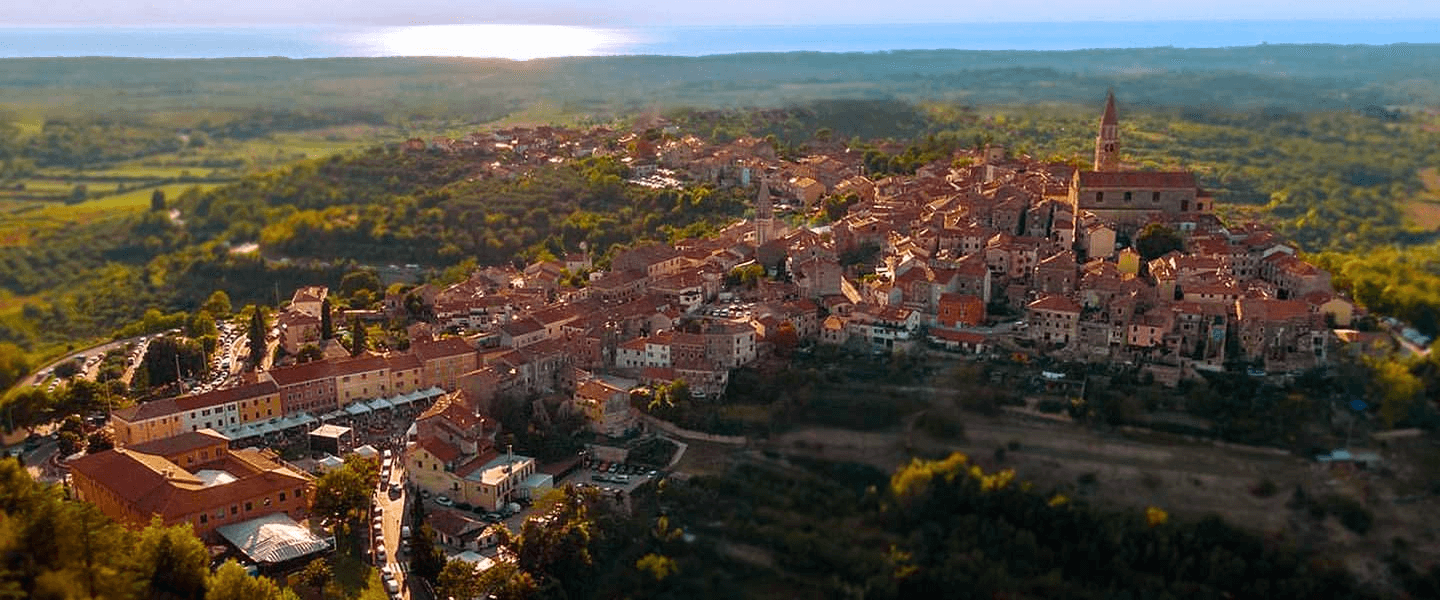
Grožnjan
The nearby Motovun might be the quintessential Istrian hilltop town, but Grožnjan is also well worth visiting. As is the case with many Istrian towns, it was settled during the Roman times, built under Venetian rule in Middle Ages, and well preserved up to today. The place was almost deserted after World War II, but in 1965 a group of artists decided to turn the town into an art colony, which remains up to the present. It’s a great accommodation spot for those who don’t need the sea, and it makes for a good base for exploring the hilly part of Istria. Learn more about Grožnjan here.
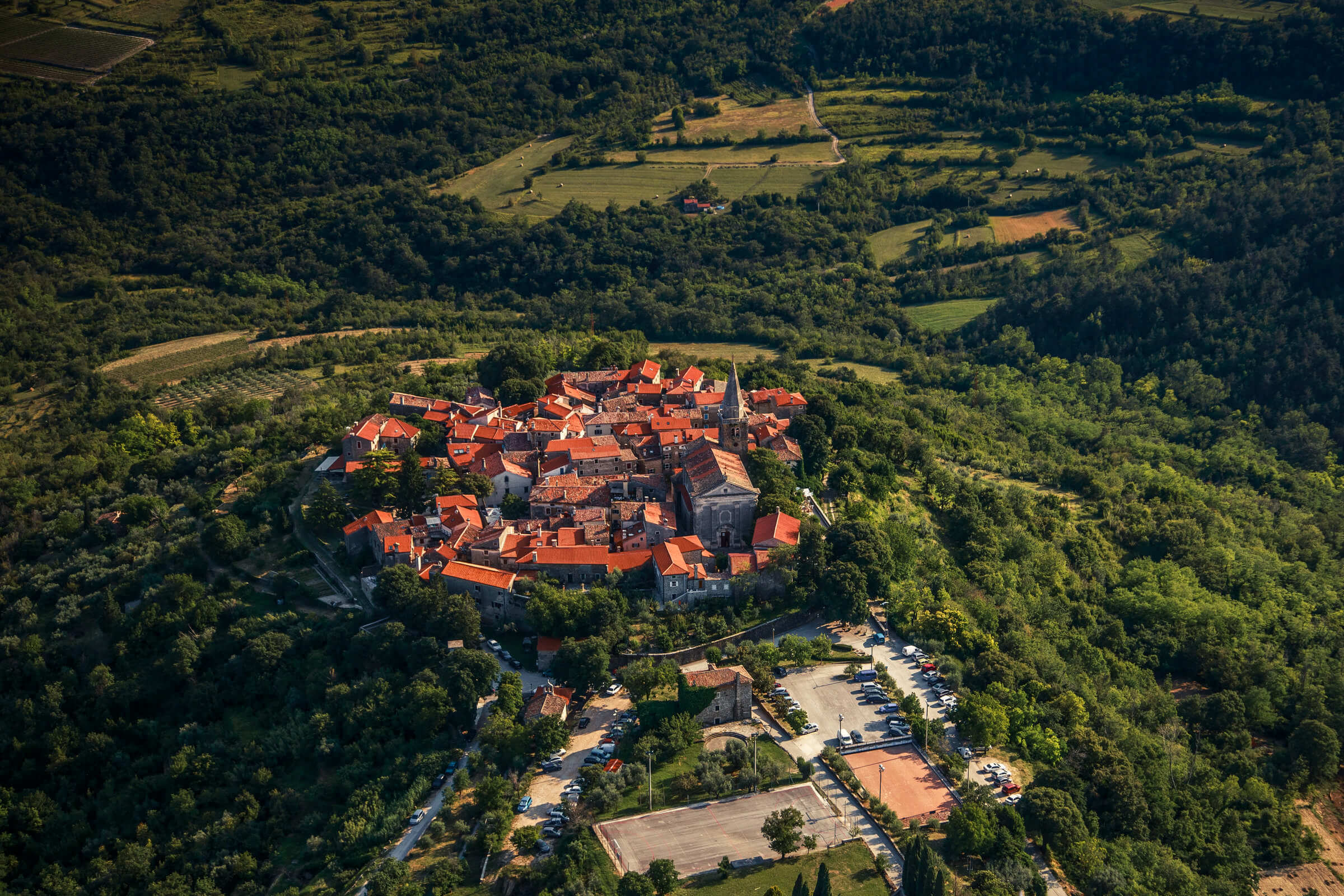
Photo: Mario Romulić
Pićan
Sometimes it is not easy to follow the traces of Pićan in historical sources because it hides under various names. The origin of the name Petina is attributed by some to the assumption that the Diocese of Pićan was the fifth in the world, with the word five (pet, in Croatian) having Celtic roots. Pićan is certainly inhabited in distant prehistory. The oldest parts of the Istrian hillfort were located on the hill of Calvary, north of today's settlement, and then it is assumed that the Celtic tribe Secusa lived there. In Roman times, probably in the same strategically well-chosen place, there was a military stronghold and the settlement of Petina. Learn more about Pićan here.
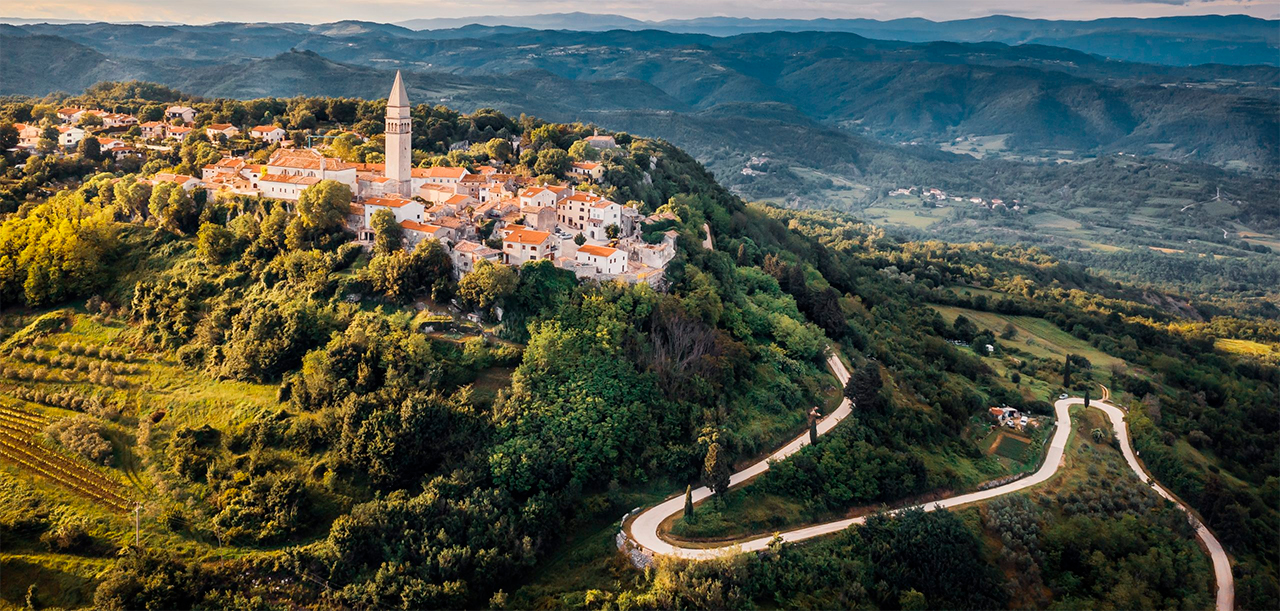
Image: Pićan municipality/Official website
For more on travel in Croatia, follow TCN's dedicated page.
New Tourist Attraction in Groznjan: Church Bell Tower to Become Viewpoint
As Glas Istre/Luka Jelavic writes on the 16th of January, 2020, most of the work involved in transforming areas of Groznjan into tourist attractions is related to the restoration of the bell tower itself and the repair of the roof of the parish church in Groznjan, the restoration of the church in Kostanjica, the restoration work involved with the churches in Kuberton and Vrnjak, the restoration works in the church of St. Ivan and the decoration of the Olive Oil Museum in Zavrsje, as well as the decoration of the promenade in Groznjan, as part of the cultural and historical centre.
Since its inception, the Municipality of Groznjan has earmarked a considerable amount for the culture and protection of cultural and religious monuments, consisting of around twenty percent of the annual budget. This will be the case again this year, and around 2.2 million kuna is earmarked for these purposes and cultural events of interest to the municipality and its citizens. Part of the funds for this have been provided directly from the budget, while part, especially for larger investments, will be raised from various funds or donations from state institutions and the like.
Of this amount, almost one million kuna will be invested in cultural and religious heritage buildings in Groznjan.
In the parish church in Groznjan, the stairs to the bell tower were restored earlier, the entrance to the bell itself was expanded, and a new front door to the bell tower will be erected. Otherwise, the bell tower and statics need to be strengthened and accessibility improved so that in the near future the 36-metre-high bell tower, built next to the church between 1603 and 1682, can also be used as a lookout for tourists.
The church in Sterna, built in 1746 with the bell tower erected in 1791, will continue to function as it always has done. The entire roof is being restored, followed by the painting and decorating of the interior, which was illuminated last year.
The restoration of the southern and northern chapels in the interior of the parish church, which was built in 1500 and completed in 1769, has already been completed in Kostanjica. Documentation was also prepared for the renovation of the ceiling and roof of that particular church. The north chapel's restoration was followed by additional works on the roof to preserve the interior before further reconstruction. In front of the church lies a gorgeous Venetian bell tower, made of sandstone, on whose arch the year of construction was written - 1766. The cemetery will also be worked on in Kostanjica.
''There are many smaller and larger sacral objects in our area that are part of the cultural and sacred heritage that should be preserved from decay. It's the most difficult where there are very few or no residents, such as in Vrnjak, a long-abandoned village or in Kuberton where a house is restored and some people come back. This year, we'll be working to save the churches in these two places. In addition to the roof, wooden joinery needs to be repaired. The municipality invests in such facilities every year as much as it can, there's a lot of work to be done, especially on roofs that are damaged and on the ceilings and interiors which are damaged, which is a huge amount of damage because the churches are mostly painted,'' says Claudio Stocovaz of Groznjan, adding that the fresco on the the ceiling of St. Florian's Church near Martincic was recently restored.
Other activities in the field of culture and cultural heritage include a massive 112,000 kuna cash injection for ''regular'' activities (cultural programs, the municipality award for the Ex tempore painting event, the creation and publication of the Grožnjan monograph and various cultural events), while the budget for local festivals and cultural events that nurture folk traditions and customs, is estimated at around 230,000 kuna.
For the Jazz is Back! cultural event, the municipality will allocate 322,000 kuna, which is part of the total cost of the international festival, and 300,000 kuna is planned for the continuation of the preservation and renovation of the inter-storey structures of the castle in Zavrsje, a historic building built back in the eleventh century as the palace of the noble Contarini family, which ruled the area for three centuries.
Part of the funds from the budget is also earmarked for the regular activities of the Fonticus City Gallery and for various other activities which preserve culture and the arts as a whole.
Make sure to follow our dedicated travel page for more on Groznjan and Istria.
Discovering Deserted Istria in Late December: Divine
Istria has the potential to be a 12-month tourism destination, but it is really nice to discover when most things are closed and the crowds non-existent, as TCN discovered on a 2-day tour, finishing on December 31, 207.
Jazz is Back – 2016: Groznjan at its finest
A slice of jazz heaven in Istria until July 30, 2016.


